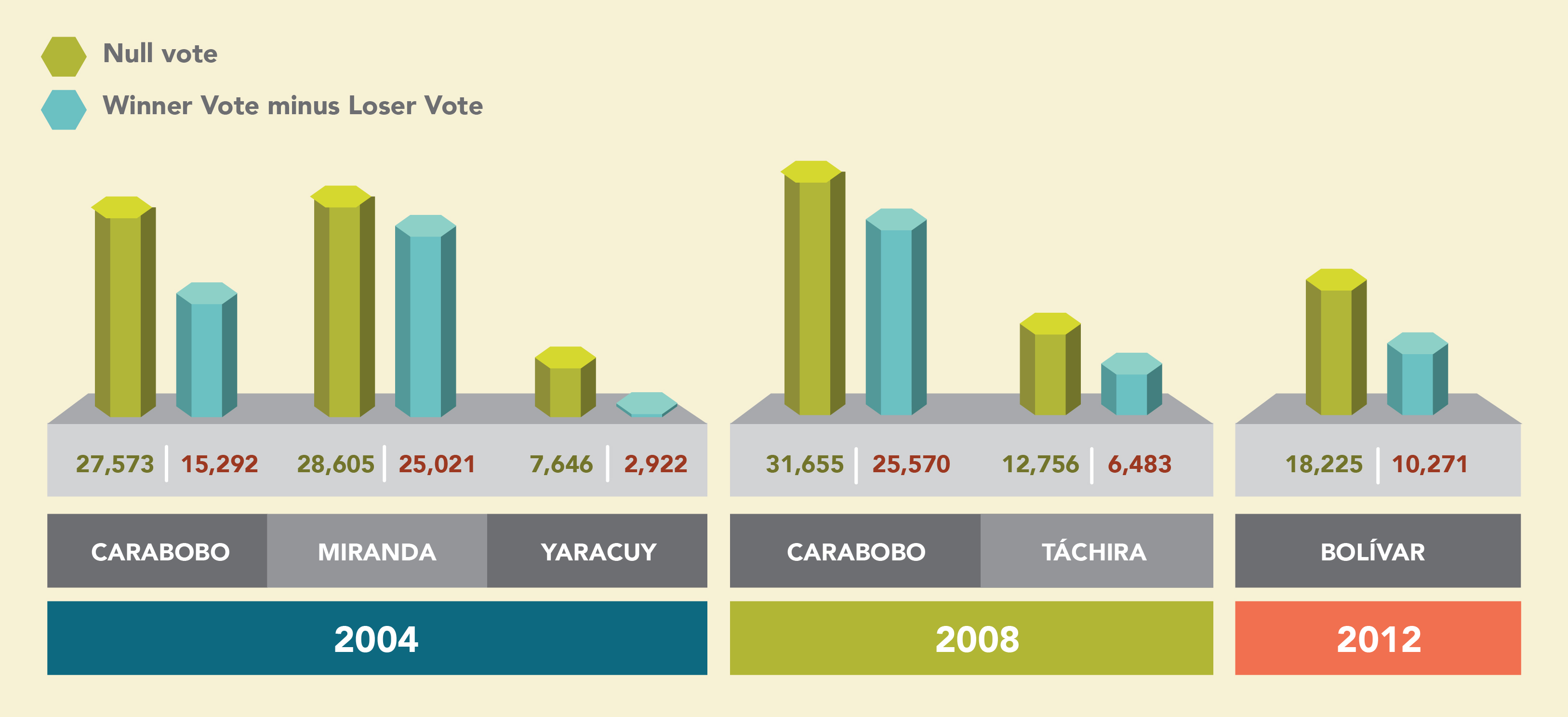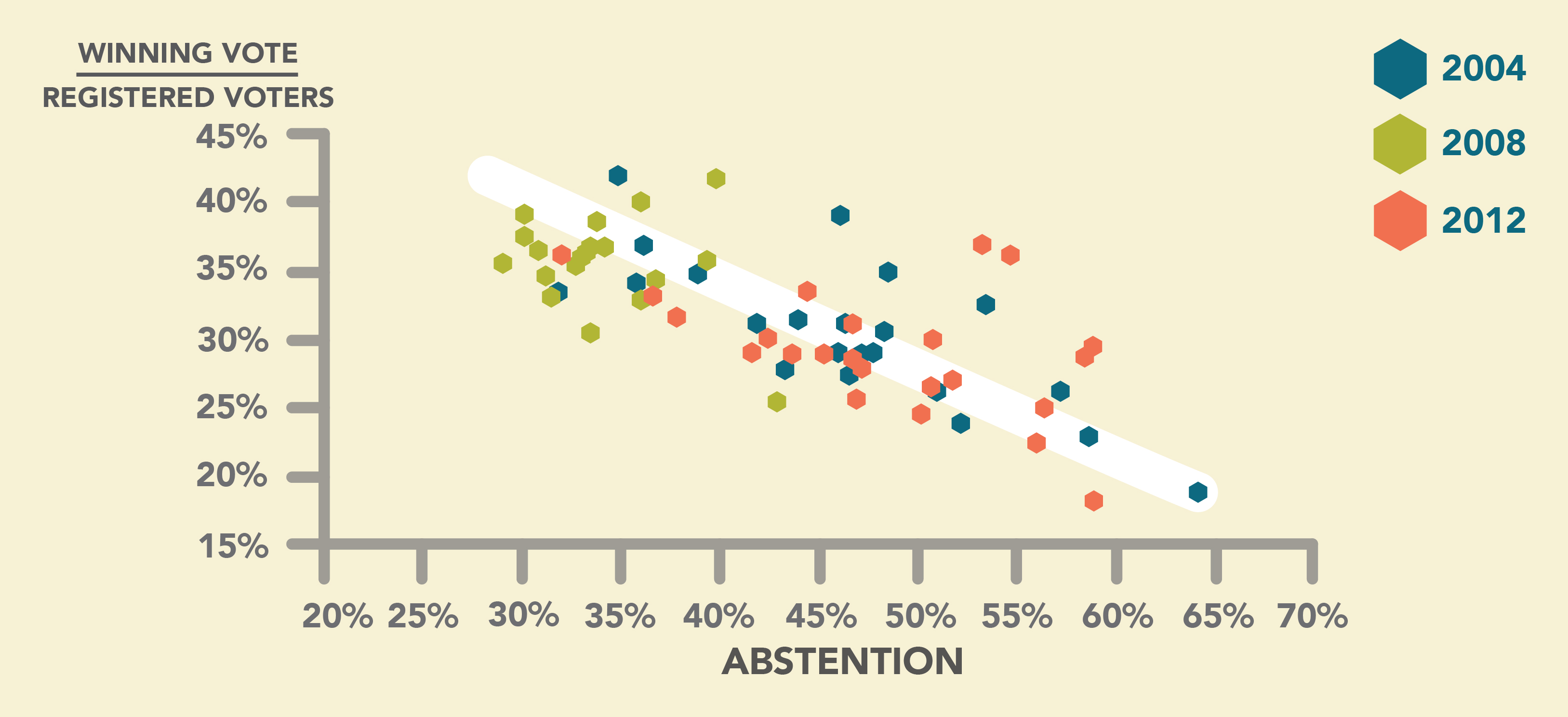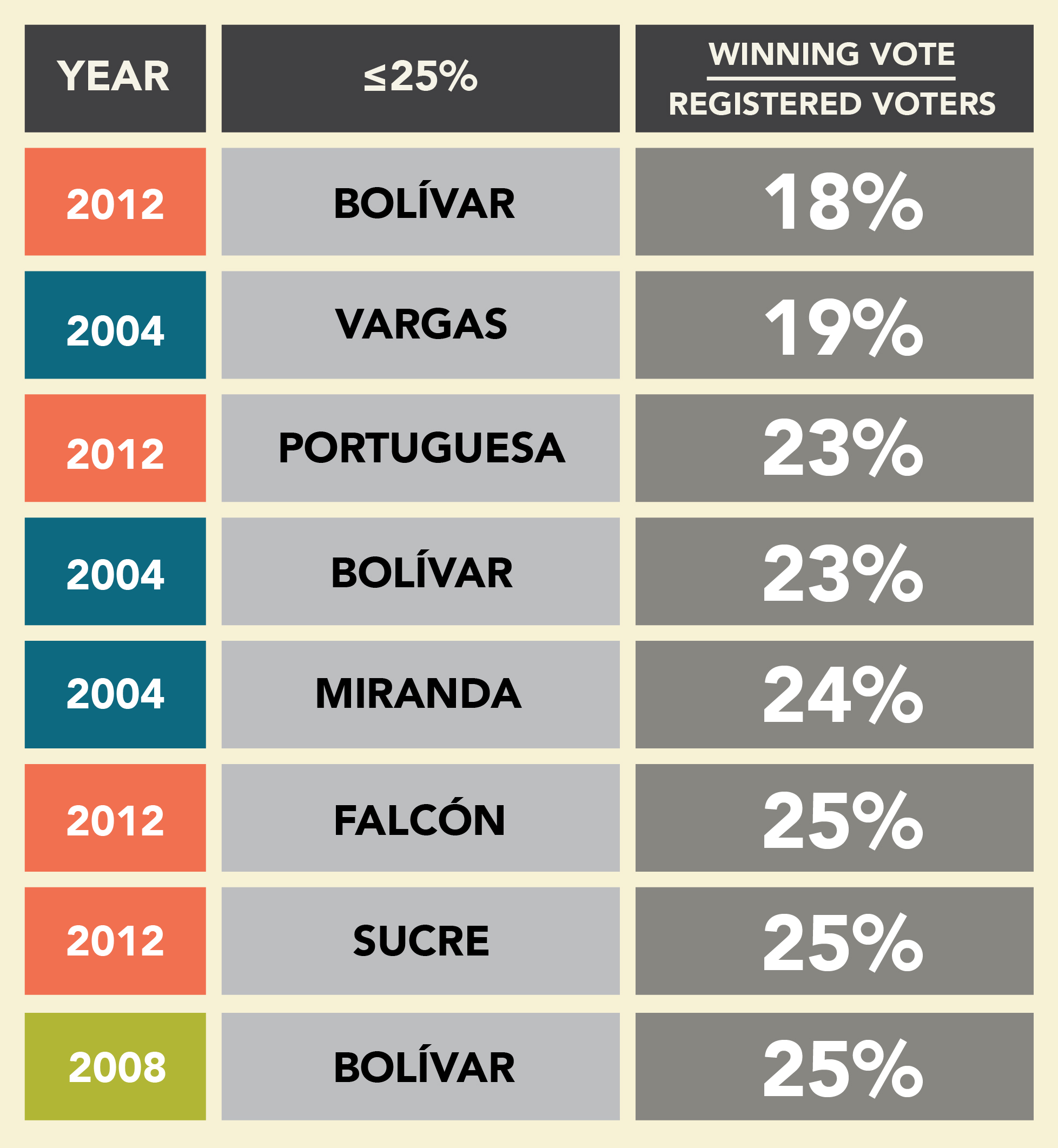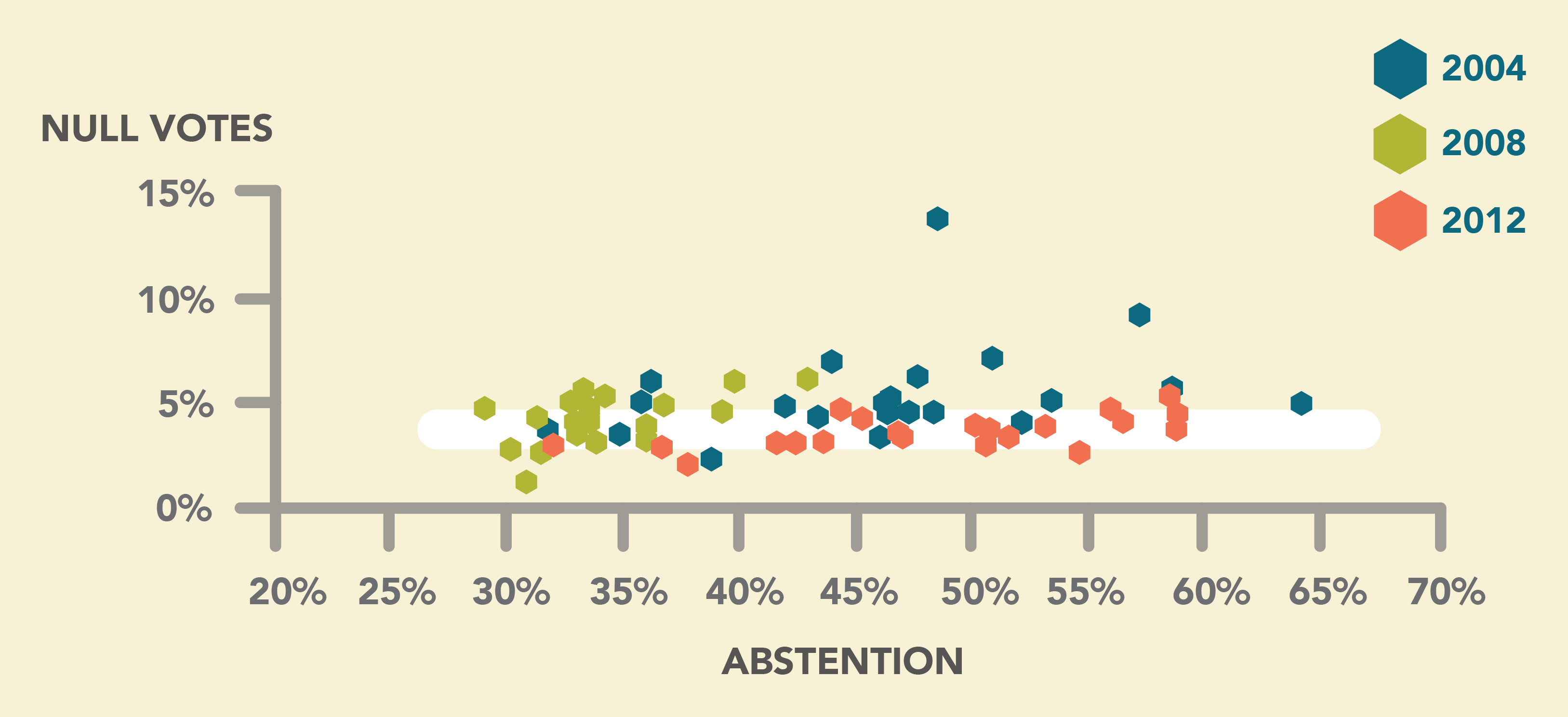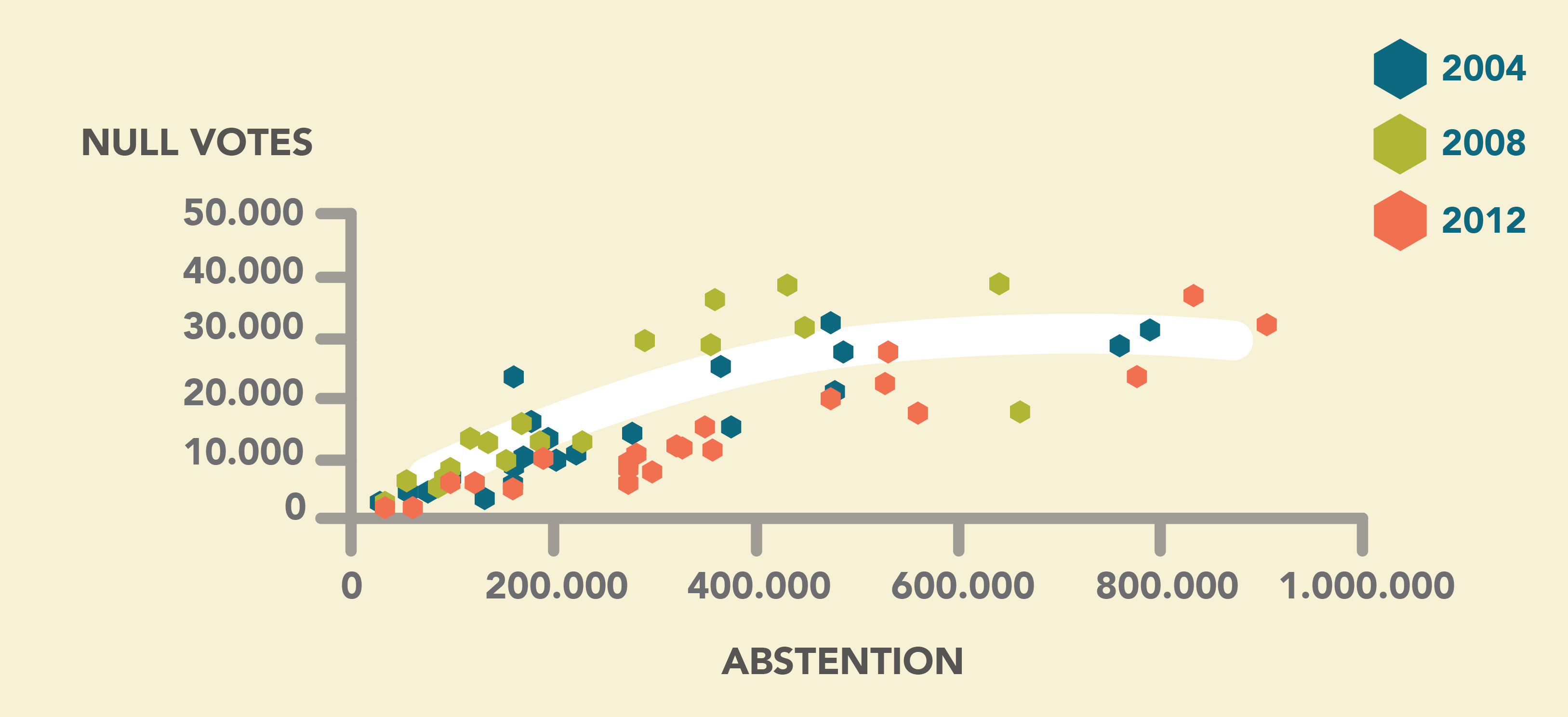The (electoral) Joker Cards: Null Vote & Abstention
With regional elections around the corner and CNE in full-out sabotage mode nobody knows for certain how many will be able to vote. And this could make a pretty dramatic difference. It sounds scary, because it is.


Infographics by Mario Dávila
Null votes and abstention are there in every election and, once results are in, nobody thinks about them. But how did they really factor in during the last regional elections, and how do they predict what’s to come?
The Power of the Null
In the 2004 regional elections, the null vote averaged 5.5% of total votes. It was 4% in 2008, and 3.8% in 2012.
It might seem like pocket change, but in 2004, the null vote surpassed the difference between the winning and losing votes in Carabobo, Miranda and Yaracuy. This happened again in Carabobo and Táchira in 2008 (helping the opposition win, by the way), and in Bolívar in 2012.
Abstention can (help you) win
The number of citizens who didn’t vote was always higher than the difference between the winning and losing votes — with the exception of Delta Amacuro in 2008.
And though it may seem obvious, it’s funny how, as voter turnout decreased, it got easier for the winner to lead — since fewer votes were needed.
See, on these last regional elections, eight governorships were won with 25% or less of all registered voters in each state — one state took the cake in all three elections: Francisco Rangel Gómez won the governor’s race in Bolívar with 23% of the electoral registry in 2004, 25% in 2008 and a mere 18% in 2012.
Abstention and Null Votes don’t play together (or do they?)
Now, the percentage of null votes amongst total votes didn’t vary much when crossed with abstention levels. But careful here: the number of null votes seems to be directly proportional to abstention.
An abstention of, say, 42% is not the same in Miranda as it is in Táchira, as the results of 2012 depicted (830,281 and 350,762 votes respectively). But as the number of voters increases, the number of null votes decreases.
This means that in an election with informed and motivated voters (as it was in 2008), the number of voters increases — and these folks know how to vote.
How will it play out this time?
The opposition leaders seem to have forgotten about last year’s referendum, inhabilitaciones and political prisoners, to favor a widely unpopular CNE in all the regular (and irregular) steps to hold regional elections. Chavismo protected their unpopular governors by choosing different candidates for some states, while throwing away money in anything but modest campaigns full of age-old promises.
So these elections come right at us with (apparently) unmotivated citizens, who don’t think this election will make much difference in their daily life.
In this scenario, the null votes and the abstention could make a huge difference.
If, for example, traditional opposition municipalities like Baruta and Chacao don’t pull in good numbers, or show up making a bunch of mistakes at the voting stations, the opposition candidate for Miranda will lose.
Keep an eye on these joker cards, for they might be critical.
Caracas Chronicles is 100% reader-supported.
We’ve been able to hang on for 22 years in one of the craziest media landscapes in the world. We’ve seen different media outlets in Venezuela (and abroad) closing shop, something we’re looking to avoid at all costs. Your collaboration goes a long way in helping us weather the storm.
Donate


